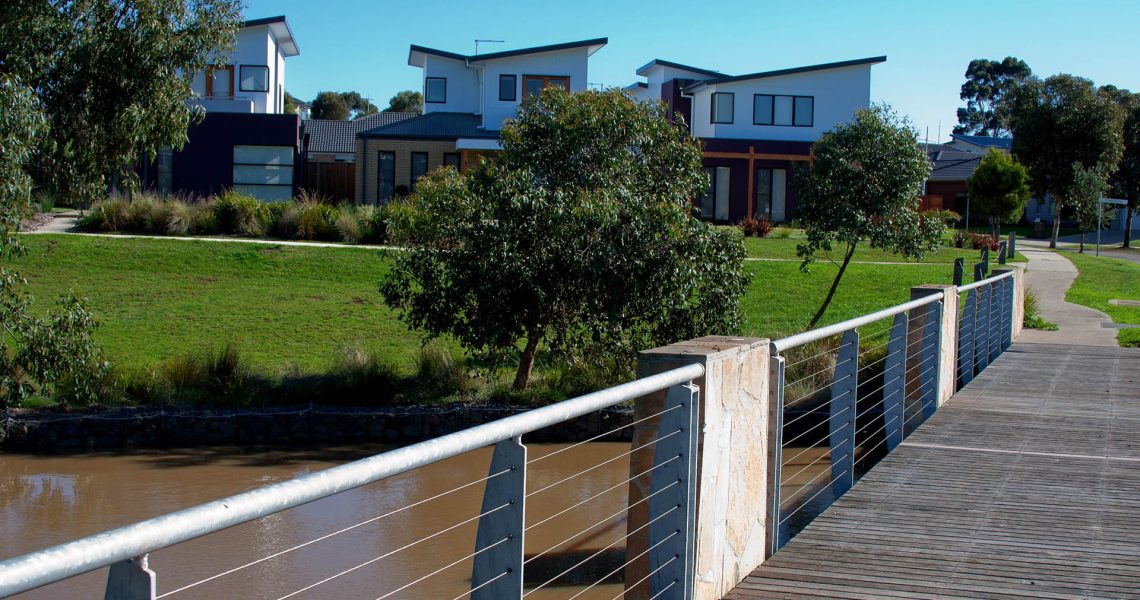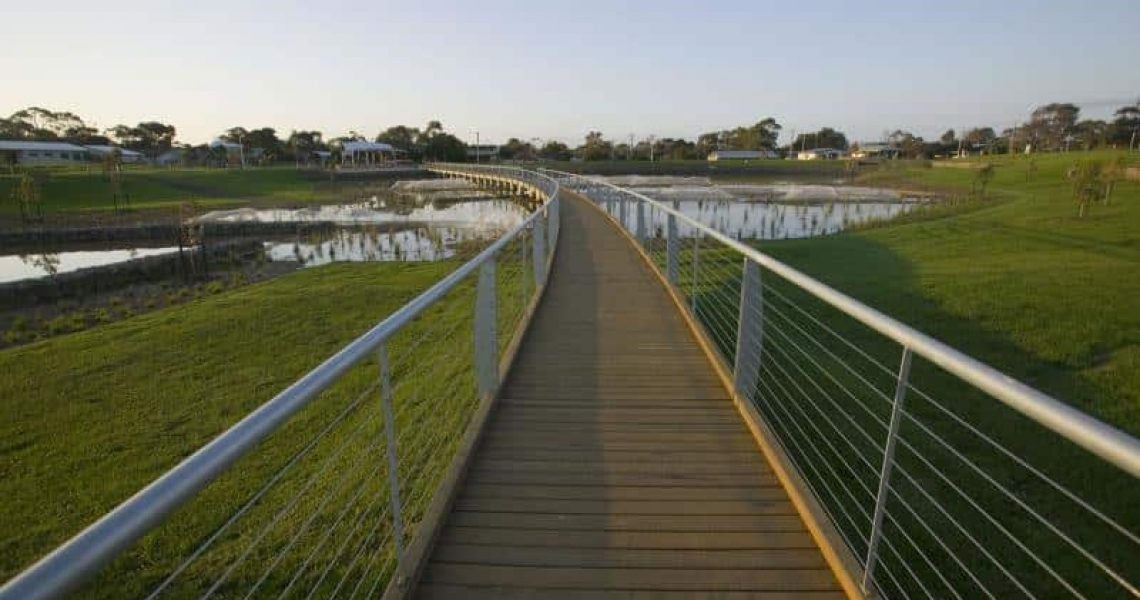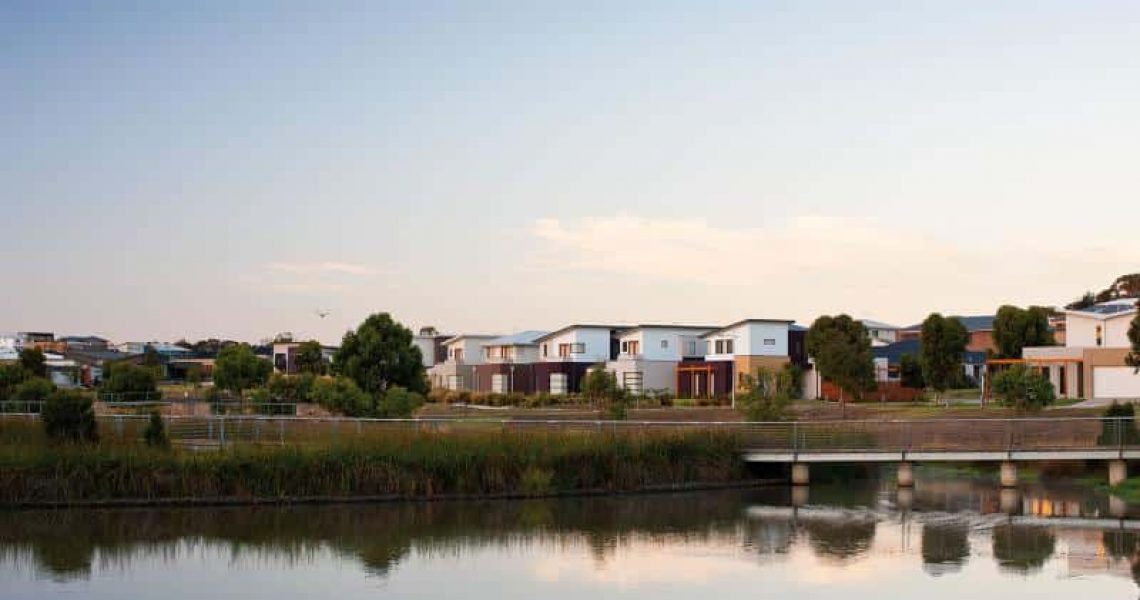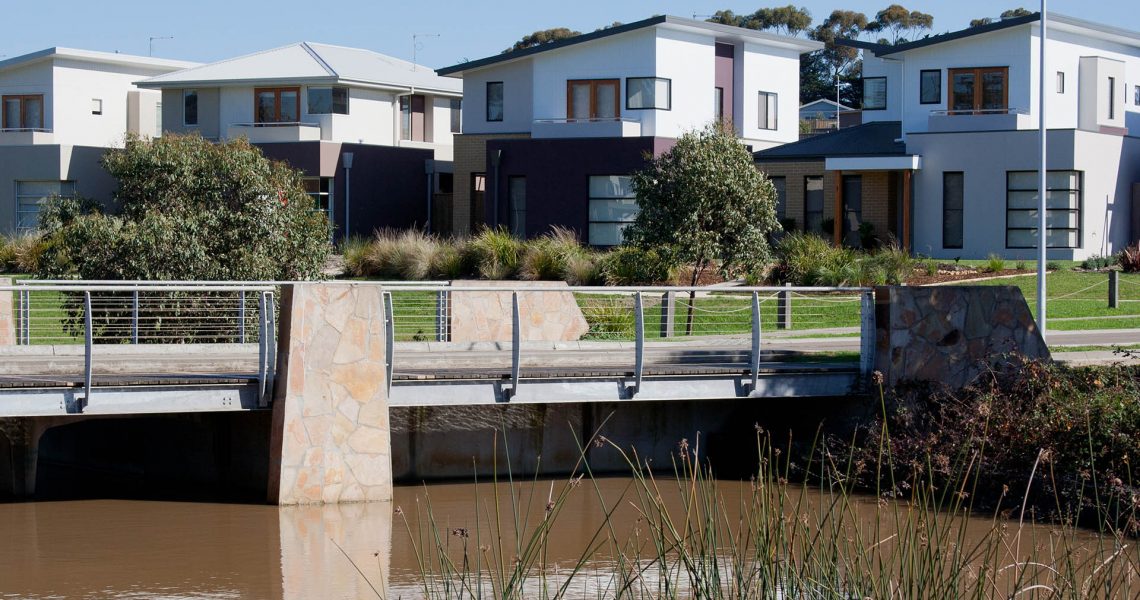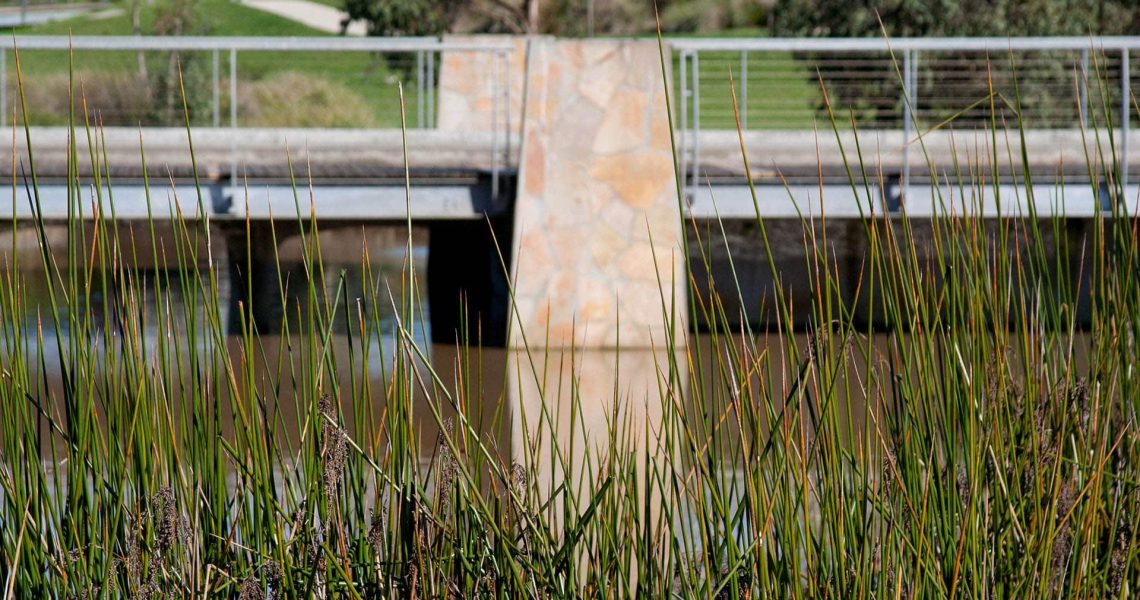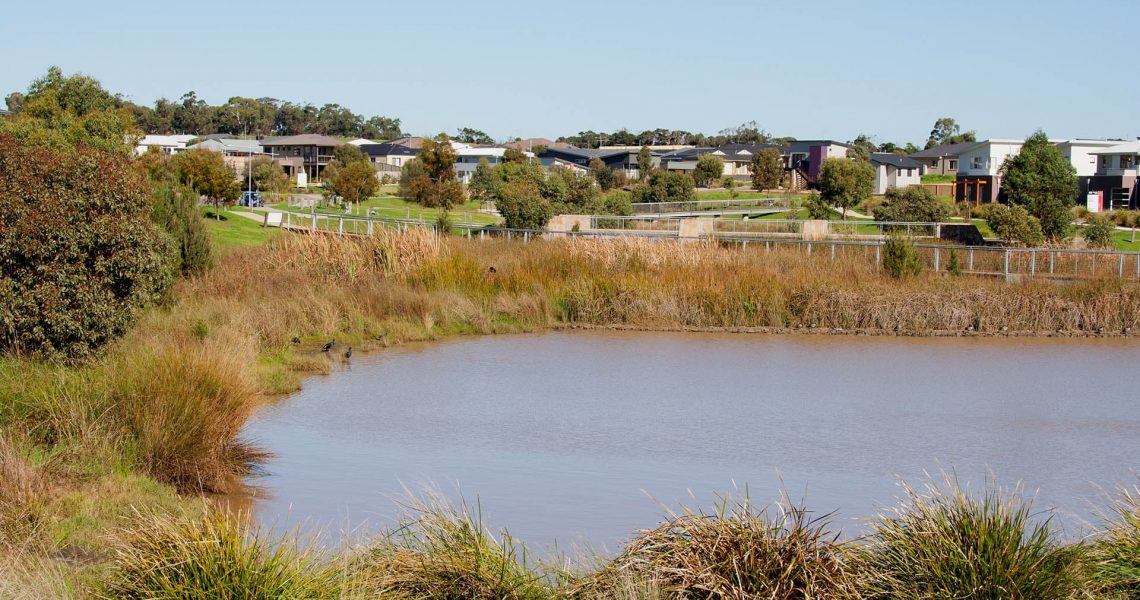Seagrove is an environmentally-sensitive residential subdivision, located in Cowes on Phillip Island.
- Southern Sustainable Developments
Overview
Seagrove is an environmentally-sensitive residential subdivision, located in Cowes on Phillip Island. The 36.5 hectare site features rising land with views across Western Port Bay. Phillip Island forms part of the Western Port Biosphere Reserve, recognised by the United Nations Educational Scientific and Cultural Organisation (UNESCO). Seagrove is part of this beautiful natural environment, adjacent to a regionally significant eucalypt woodland and less than 700 metres to the coastline.
The client’s commitment to sustainability was inspiring to our design team, including water resources and civil engineers and urban designers. Retention and protection of existing native vegetation and enhancing the habitat values of the site was a priority. Reducing energy consumption and saving water were also key objectives.
Some initiatives include street lighting that is energy efficient, saving up to 43% energy compared to standard street lights. All homes are connected to minimum 4500 litre water tanks for toilets and garden irrigation. 98% of home sites have optimum solar orientation. Extensive planting of native vegetation and protection of existing indigenous trees has ensured that the site is haven for wildlife.
By far the biggest challenge on this project was drainage. The site had no drainage outfall and a new outlet to Westernport Bay was required some 600 metres away. Westernport Bay is subject to the international Ramsar Treaty together with many other legislative requirements and it initially seemed impossible to obtain a new drainage outlet. Our water resources and civil engineers were able to demonstrate to the state government authority – then the Department of Sustainability and Environment (DSE), and Environment Australia, that we could come up with an innovative approach to drain the site post development and protect the sensitive local environment. Best practice was achieved with the integration of an extensive central wetland, bio-retention cells and rain gardens in every street as part of an integrated approach to water sensitive urban design.
Seagrove was recognised for environmental excellence in the 2007 Urban Development Institute of Australia Awards for Excellence. The judges commended Seagrove for “setting a new benchmark for sustainable residential development”. The project has many unique engineering and sustainability solutions which we now consider common practice in land development.
